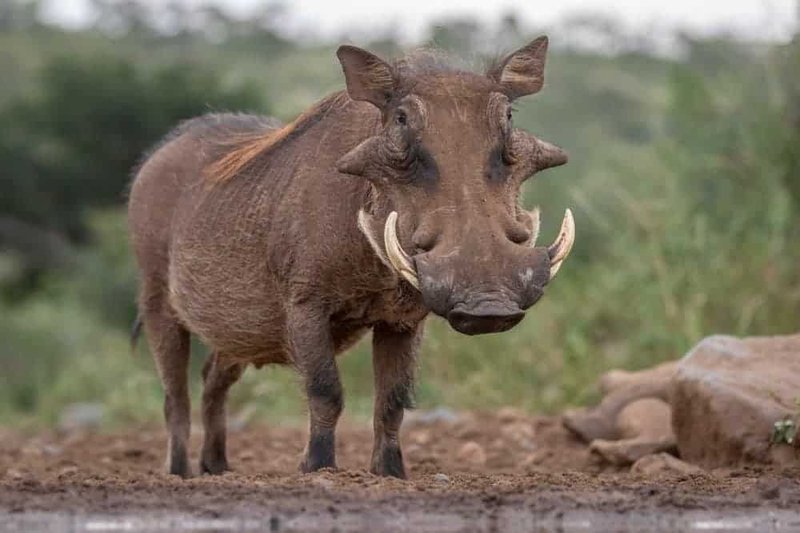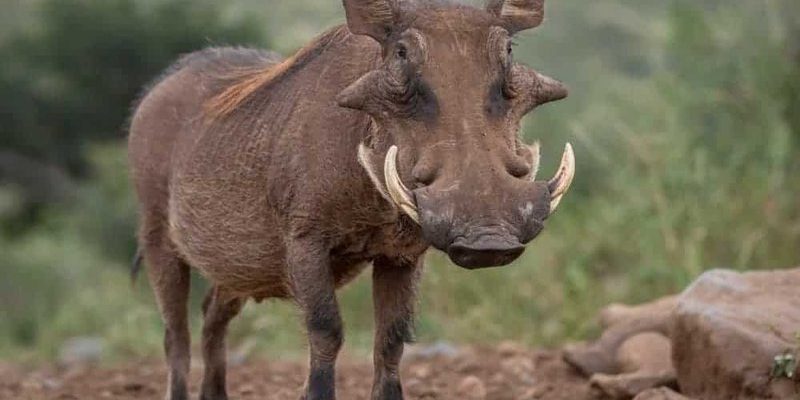
Warthogs are often found in sub-Saharan Africa, roaming savannas and grasslands. They have a unique way of living, sticking to a plant-based diet that relies heavily on the resources their environment provides. Think of them as nature’s lawnmowers, keeping the grasslands trimmed while maintaining the ecosystem. So how do they find food and avoid predators? Let’s explore their diets and hunting habits in detail.
Understanding Warthog Diet
Warthogs are primarily **herbivores**, which means they mostly eat plants. Their diet mainly consists of grasses, roots, fruits, and bark. You might wonder how they manage to find enough food in their habitats. Here’s the rundown:
– **Grass:** Warthogs are particularly fond of tall grasses. They have strong, muscular jaws that help them root around in the earth to find tasty plants. Honestly, it seems like they have an endless appetite for fresh greens!
– **Roots and Tubers:** When grasses are scarce, warthogs dig up roots and tubers. Their sturdy snouts are perfect tools for foraging underground. This digging behavior helps in the growth of new plants, making them essential for their environment.
– **Fruits and Bark:** Though not as common, warthogs will munch on fruits or bark when available. They enjoy seasonal treats like fallen fruits, adding some variety to their diet.
Overall, the warthog’s diet is balanced, as they take what the land offers them. This flexibility helps them thrive in various conditions, which is crucial for their survival.
Hunting Strategies and Foraging Behavior
Though warthogs aren’t hunters in the traditional sense, they have clever strategies for finding food. Their foraging behavior is quite fascinating. Let me explain.
– **Social Foraging:** Warthogs often feed in groups, which can be beneficial. They keep an eye out for each other, watching for predators while munching on grass. It’s kind of like a potluck where everyone brings something to the table— in this case, the table is the savanna!
– **Rotational Grazing:** They practice rotational grazing, which means they visit different areas to give the grass time to recover. By doing this, they can maintain a steady food supply and help their habitat flourish.
– **Adaptability:** Warthogs are quick learners. If food becomes scarce in one area, they’ll adapt and travel farther to find new grazing grounds. This adaptability is key to their survival in changing environments.
Overall, while they don’t hunt like predators, warthogs have developed effective foraging strategies that benefit both them and their ecosystem.
Warthogs and Their Role in the Ecosystem
Warthogs play an essential role in maintaining the health of their environment. Their diet and foraging habits contribute significantly to the ecosystems they inhabit. Here’s how:
– **Grass Management:** By grazing on grasses, warthogs help control plant growth. This prevents certain plants from overtaking the landscape and promotes biodiversity, allowing a variety of species to thrive.
– **Soil Aeration:** Their digging habits aerate the soil, which is vital for seed germination. This natural plowing helps new plants grow, sustaining their environment and creating a lush habitat for other creatures.
– **Nutrient Recycling:** As warthogs forage, they also contribute to nutrient cycling. Their waste enriches the soil. This process not only benefits the plants around them but also attracts other wildlife.
In essence, these playful creatures are more than just food for predators; they’re crucial in maintaining the health of their ecosystems.
Predators and Threats to Warthogs
Warthogs are not without their challenges. Though they have a sturdy build and tusks for defense, they face threats from various predators. You might be surprised to learn who their main foes are:
– **Big Cats:** Lions and leopards are perhaps the biggest threats to warthogs. These stealthy hunters are always on the lookout, ready to pounce when a warthog is caught off guard.
– **Hyenas:** Known for their pack hunting, hyenas can be a significant threat, particularly when they outnumber warthogs. Their group strategies can make it tough for a lone warthog to escape.
– **Crocodiles:** When warthogs come to drink water, they need to be wary of lurking crocodiles. This ambush predator can strike when the warthogs least expect it.
To counter these threats, warthogs often employ a few survival tactics. They use their keen senses to stay alert and can quickly flee to safety if danger approaches. Their social structures also play a role in helping them avoid being picked off by predators.
Warthog Behavior and Social Structure
Warthogs are social animals that exhibit interesting group dynamics. Their behavior helps them thrive in the wild. Here’s a closer look at their social structure:
– **Family Units:** Warthogs typically live in family groups called sounders. These consist of females and their young, while males often roam solo or join temporarily. It’s heartwarming to see a mother warthog caring for her little ones, teaching them the ropes of foraging and staying safe.
– **Hierarchy:** Within a group, there’s usually a hierarchy. Dominant females lead the sounder and get first pick of food. This social order helps maintain peace and reduces conflict over resources.
– **Grooming Rituals:** Warthogs also engage in grooming behaviors, which strengthen social bonds. This grooming is vital for maintaining harmonious relationships within the group. It’s almost like a spa day for them, building trust and cooperation.
Their social structures and behaviors are fascinating to observe and play an essential role in their survival.
Conservation Status and Threats
Despite their adaptability, warthogs face threats from habitat loss and hunting. Understanding these challenges is essential for their conservation. Here’s what you need to know:
– **Habitat Loss:** As human populations grow, they encroach on warthog habitats. Urbanization and agriculture can reduce their grazing grounds, making it harder for them to find food.
– **Poaching:** In some areas, warthogs are hunted for their meat or tusks. Illegal poaching can drastically reduce their populations, putting pressure on local ecosystems.
– **Conservation Efforts:** Thankfully, various organizations work to protect warthogs and their habitats. By promoting sustainable practices and enforcing anti-poaching laws, we can help ensure their survival.
Understanding these threats is crucial. By raising awareness and supporting conservation efforts, we can contribute to a world where warthogs continue to thrive in their natural habitats.
Warthogs are truly remarkable creatures with unique diets and foraging strategies that play pivotal roles in their ecosystems. From their social behaviors to their impact on the environment, they offer a fascinating glimpse into the wild life of Africa. By understanding and appreciating these animals, we can contribute to their conservation and ensure their continued presence in the savannas.
If you ever get the chance to see a warthog in the wild, take a moment to appreciate its tenacity and adaptability. They might not be as glamorous as lions or elephants, but they certainly have their charm and are deserving of our respect and protection. Let’s all do our part to keep the ecosystems they inhabit vibrant and thriving!

